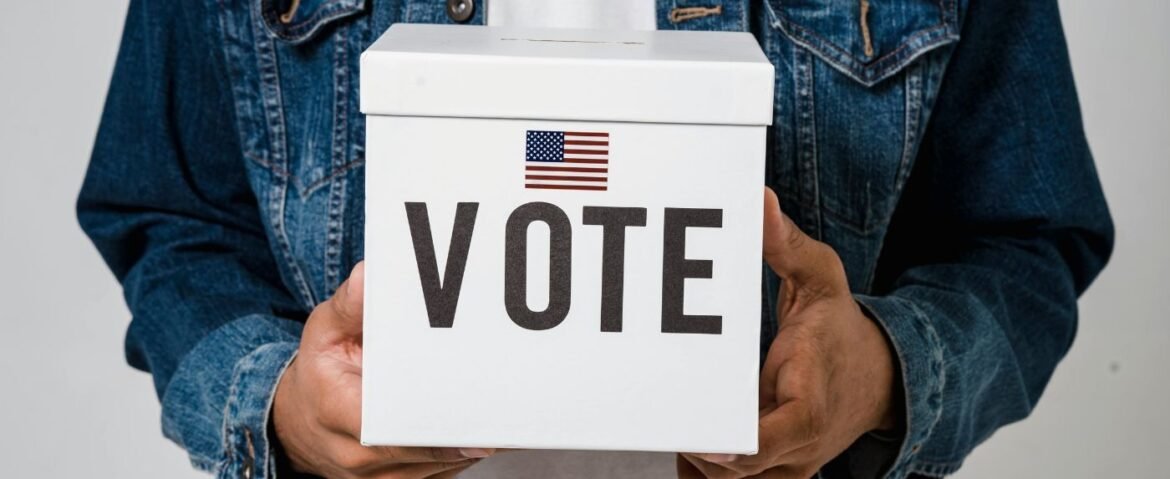Why are the 2025 United States elections important?
The 2025 U.S. elections will be a significant milestone for a number of state and local governments in the country. As major gubernatorial, mayoral, and legislative contests are taking place, the electorate is shaping the political character in the next presidential cycle.
In contrast to national elections, the voting contests this year are based on state-level voting, in which local leadership choices may shape the national policy discussion on matters such as housing, education, and climate resilience. Read the news on newstodate.co.uk.
Political analysts refer to such elections as a mid-year form of vote calendar in the United States, though they take place in an off-year.
The confluence of future U.S. ballot contests, special elections, and leadership changes in a variety of states is an indicator of how the nation is still addressing the post-pandemic political changes.
What States have the most important elections?
Virginia: Governor Contest Results Under Wide Surveillance.
In Virginia, preliminary reports indicate that there is a very competitive atmosphere in the Virginia gubernatorial contest. The two leading parties have invested heavily during the campaign trail, and it is similar to a litmus test on the voter mood before 2026.
Voter turnout in the suburban and rural counties is attracting some interest as it mirrors various voter interests in healthcare, economic development, etc.
New Jersey: Cutthroat Politics and Change of Leadership.
The race of the governor of New Jersey has also been in the spotlight of the entire nation. The New Jersey political race analysts indicate that there were high urban turnouts and grassroots campaigning.
The competition between the parties has been heightened with the candidates aligning themselves on taxation, means of transport, and environmental policy, which have been among the major issues in one of the most populous states in the country.
New York City: Mayoral Vote and City Voter Trends.
Another high-profile race that will define the New York City mayoral vote is the mayoral election of New York City. Initial statistics indicate that there were high turnouts of young voters and new entrants.
It has been seen that the city needs such things as affordable housing, infrastructure, and crime prevention are on the agenda. The trends in the urban and rural voters are quite different in the state; the city residents are more reform-minded, whereas the rural ones are concentrated on economic opportunity.
California: Voter Participation and Balloting.
The trend in the voter turnout in California indicates good attendance at the start of the voting process, particularly in those counties that have local referendums. Great education and infrastructure funding plans are contained in the ballot of the state.
Although there is no gubernatorial contest going on, California is a kind of test of voter turnout across the country; the changes in the Golden State usually indicate the possibility of political realignment in the future.
What Patterns of Early Voting and Turnout Are Changing the Outcome?
In America, there are higher-than-anticipated rates of participation in early voting in America. Law enforcement agencies indicate that there are no negative problems with the work of polling stations in the United States, digital technologies are valid and ensure the stable operation of voting, and the number of security problems is minimal, which can be attributed to the fact that over the years of work, the digital security of voting has only been enhanced due to investments in it.
Scottish Labour By-election Victory Signals Major Political Shift in Scotland
It can be inferred that there is an increasing confidence in the election infrastructure with absentee and in-person ballots combined.
In addition, the trends of national voter participation show that both the democrats and the republican are organizing their bases, and subsequently, the swing areas have moved closer.
Which are the Essential Battlefield Areas and political changes?
The main battleground states in the country are Virginia, New Jersey, and the Midwest regions, whose voter perception is still volatile. These regions are more representative of Democrat/Republican faceoffs, with some state legislative houses in the balance. In the suburban areas, it seems that moderate candidates are on the run, attracting moderate voters, whereas the progressive and conservative blocs mobilize their voter bases.
This wave of the campaign trail and the changes that have been noted in these areas point towards a realignment of strategies and the upcoming elections.
Parties are also prioritizing voter engagement and voter behavior and are refining their outreach using data analytics.
What Are the Future Changes in Campaign Strategies and Messaging?
Modern Campaign Approaches
This election year is marked by a new campaign strategy dissection and the use of digital outreach tactics. Aspiring politicians use social media and in-person communication in the community to attract the attention of the undecided voters.
The history of momentum in campaign trail movements and changes reveals that technology is currently affixing capability in voter perception and mobilization.
Messaging and Local Issues
Candidates have scaled down their message to climate resilience in California and infrastructure renewal in New York. Political analysts observe that state and local outcome summaries are determined to a large extent by the effectiveness of campaigns in dealing with regional concerns.
Moreover, according to cross-state campaign developments, there is an integration of conventional rallies with online interaction, particularly in urban areas. The emergence of campaigns that are hybrid campaigns has facilitated a more engaging approach to the voter.
What are the Preliminary findings and Lessons?
The outcome of the elections and the reactions of the first-reporting states give an initial insight into the way national politics can change.
The gubernatorial election in Virginia is still close. In the meantime, the gubernatorial race in New Jersey is showing a slight lead for the incumbent party, although the final counts are yet to be done.
In the large cities, state and local outcome summaries show that voter preferences are more realistic problem-solving than partisan devotion. This is an indication that the U.S. political landscape picture may be changing, whereby the performance of local governance is becoming more of a policy than an ideology.
The post-election analysis and enlightenment point to the importance of economic stability, education reform, and safety to the voters. Such findings are bound to influence the discourse of future campaigns in the country.
The Question of the Security and Transparency of these Elections.
The election authorities have emphasized the role of digital security in the election and open counting. Live monitoring and verified audits were a way of getting confidence in the process. Nationally, the cases of irregularities were very few, which is a good improvement compared to the past election periods.
The national number of votes and reporting is still under scrutiny in certain states, though early signs are good that it is being tabulated correctly and to high standards. The interest in election coverage and forecasts indicates how electoral fairness and transparency are closely followed by the populace.
What Is in Store in the U.S. Political Life?
The 2025 elections in the United States have paved the way for strategic repositioning of the upcoming national-level competition. Political outcome analysis and lessons will be analyzed by both key sides and help them sharpen their message.
It is anticipated that there will be stronger attempts to reach more voters, and the focus will be on emerging suburban and youth demographics as well.
As the dynamics of the party competition landscape are changing, and with the increasing awareness of early ballot and turnout, the political actors are already strategizing wider campaigns that might transform the future congressional and presidential races.
Conclusion
The elections of 2025 in the United States present a glorious democratic process at the state, city, and local levels. Based on the outcome of the Virginia governor race, to New Jersey political race analysis, and the California voter turnout analysis, Americans proved to be highly civic and flexible.
This year presented the perfect test of the mood at the national level with a combination of state-level contests of voting and the midterm-type of vote schedule in the U.S.
These elections have emphasized the strength of American democracy, the increasing sophistication of online election machines, and the significance of local government in the formation of national discourse as final counts are tallied.
In the future, these consequences will not only affect the following election but shape the future political course of the United States in general.
FAQs
What were the key elections of this year?
Among the states that were closely followed in the 2025 elections were Virginia, New Jersey, New York, and California.
Were the key problems that were attracting voters?
Among crucial problems were the economy, the security of people, housing, and reforms in education.
Was there an issue with the security of the election?
Major incidents were not reported, and digital security systems worked throughout the polling stations.
What was the impact of early voting?
The turnout with early voting was much higher, and the processing of the results was quicker; the day-of delays were reduced.
How will such elections affect the politics of the country?
The findings will influence the policies of the two key individuals as they gear up for future congressional and presidential elections.


